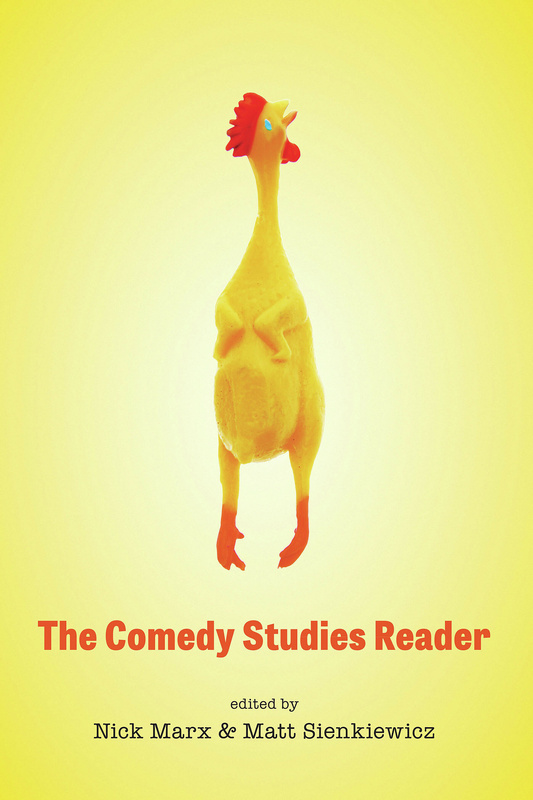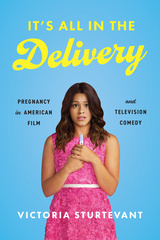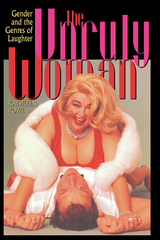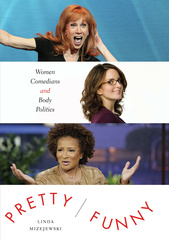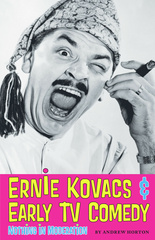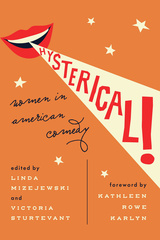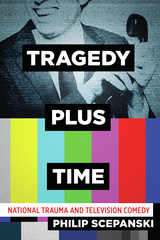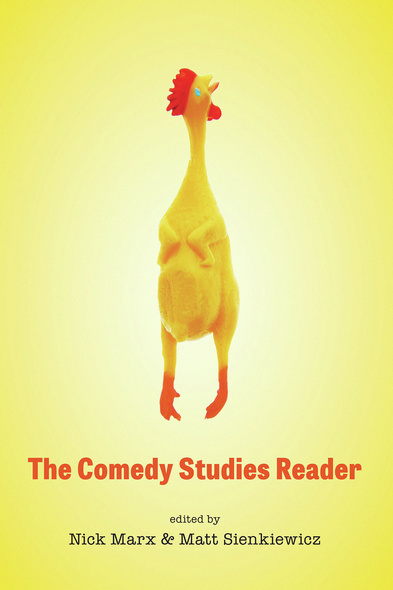
328 pages, 6 x 9
Paperback
Release Date:01 Aug 2018
ISBN:9781477316009
Hardcover
Release Date:01 Aug 2018
ISBN:9781477315996
From classical Hollywood film comedies to sitcoms, recent political satire, and the developing world of online comedy culture, comedy has been a mainstay of the American media landscape for decades. Recognizing that scholars and students need an authoritative collection of comedy studies that gathers both foundational and cutting-edge work, Nick Marx and Matt Sienkiewicz have assembled The Comedy Studies Reader. This anthology brings together classic articles, more recent works, and original essays that consider a variety of themes and approaches for studying comedic media—the carnivalesque, comedy mechanics and absurdity, psychoanalysis, irony, genre, race and ethnicity, gender and sexuality, and nation and globalization. The authors range from iconic theorists, such as Mikhail Bakhtin, Sigmund Freud, and Linda Hutcheon, to the leading senior and emerging scholars of today. As a whole, the volume traces two parallel trends in the evolution of the field—first, comedy’s development into myriad subgenres, formats, and discourses, a tendency that has led many popular commentators to characterize the present as a “comedy zeitgeist”; and second, comedy studies’ new focus on the ways in which comedy increasingly circulates in “serious” discursive realms, including politics, economics, race, gender, and cultural power.
An expertly conceived collection that proves both familiar and new...The Comedy Studies Reader expertly follows through on its promise for scholars—providing a clear invitation to play, to revisit old streets and explore new territories under the sheltering sky of comedy studies.
Nick Marx and Matt Sienkiewicz showcase an incredible collection of essays from writers and academics that analyze comedy through a variety of political and social lenses. In doing so, they make it clear that comedy is art and should be treated as such. Comedy not only reflects society but shapes it. This is essential reading.
There has never been a good collection that included the pieces I wanted to assign ever since I started teaching humor and satire fifteen years ago. But now there is. This book provides a very accessible, one-stop shop of foundational and original work for teachers and students of comedy.
This book is one of a kind, hugely valuable, with highly accessible yet provocative essays. It should be highly sought after in media studies programs, helping students and scholars find a foundation in comedy concepts before taking on longer studies.
Nick Marx is an assistant professor of media studies at Colorado State University.
Matt Sienkiewicz is an associate professor of communication and international studies at Boston College.
Acknowledgments Volume Introduction: Comedy as Theory, Industry, and Academic Discipline, Nick Marx and Matt Sienkiewicz 1. The Carnivalesque Introduction: The Naked GunA: Rabelais and His World, Mikhail BakhtinB: “The Frames of Comic ‘Freedom,’” Umberto EcoC: “Sacred Catastrophe, Profane Laughter: Family Guy's Comedy in the Ritual of National Trauma,” Philip Scepanski 2. Comedy Mechanics & Absurdity Introduction: Man Seeking WomanA: Laughter: An Essay on the Meaning of the Comic, Henri BergsonB: The Logic of the Absurd, Jerry PalmerC: “Pie and Chase: Gag, Spectacle and Narrative in Slapstick Comedy,” Donald CraftonD: “The New Logic of the Absurd: The Eric André Show,” Evan Elkins 3. Psychoanalyzing Comedy Introduction: ArcherA: Jokes and Their Relation to the Unconscious, Sigmund FreudB: “Humor,” Sigmund FreudC: “Lacan’s Harpo,” Paul FlaigD: “Revenge of the Nerds: Failure, Laughter, and Liberation on The Big Bang Theory,” Andrew J. Owens 4. Irony Introduction: Stephen Colbert at the White House Correspondents’ Association Dinner 2006A: Irony’s Edge, Linda HutcheonB: “Speaking Too Soon: SNL, 9/11, and the Remaking of American Irony,” Matt SienkiewiczC: “Welcome to the Clickhole: The Economics of Internet Parody and Critique,” Amber Day 5. Genre Introduction: 22 Jump StreetA: Popular Film and Television Comedy, Steve Neale and Frank KrutnikB: “Comedy Verité? The Observational Documentary Meets the Televisual Sitcom,” Ethan ThompsonC: “Inventing the Situation Comedy: Jack Benny, the ‘Fall Guy,’ and the Making of a Genre,” Kathryn Fuller-Seeley 6. Race & Ethnicity Introduction: Key and PeeleA: Watching Race, Herman GrayB: “The Culture Behind Closed Doors: Issues of Gender and Race in the Writers' Room,” Felicia D. HendersonC: "Naturalizing Racial Differences Through Comedy: Asian, Black, and White Views on Racial Stereotypes in Rush Hour 2," Ji Hoon Park, Nadine G. Gabbadon, and Ariel R. CherninD: “‘Indians on TV (and Netflix)’: The Comedic Trajectory of Aziz Ansari,” Bhoomi K. Thakore and Bilal Hussain 7. Gender & Sexuality Introduction: Inside Amy SchumerA: The Unruly Woman, Kathleen Rowe KarlynB: Pretty/Funny, Linda MizejewskiC: “Generic Closets: Sitcoms, Audiences and Black Male Gayness,” Alfred L. Martin Jr. 8. Nation & Globalization Introduction: Klovn and Curb Your Enthusiasm, Peter Kragh Jensen and Matt SienkiewiczA: A National Joke, Andy MedhurstB: “Transnational TV Comedy Audiences,” Inger-Lise Kalviknes BoreC: “Transgressing Boundaries as the Hybrid Global: Parody and Postcoloniality on Indian Television,” Sangeet KumarD: “Comedy and the Nation in The Trip,” Brett Mills Index

